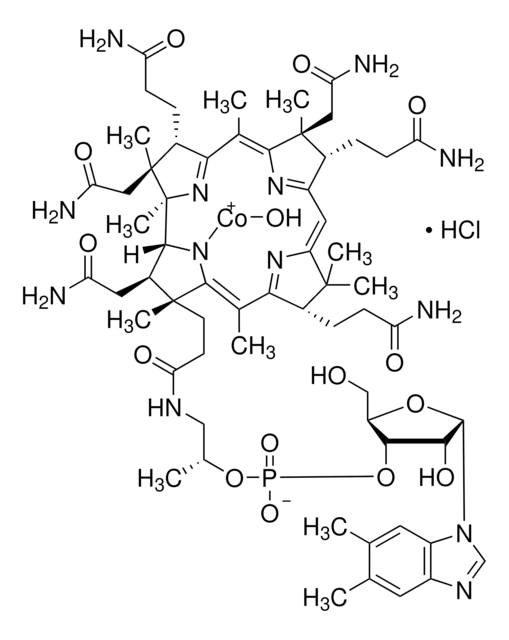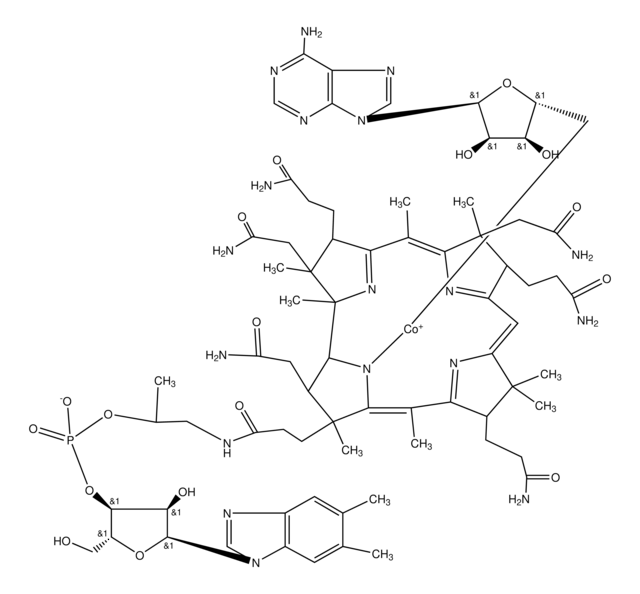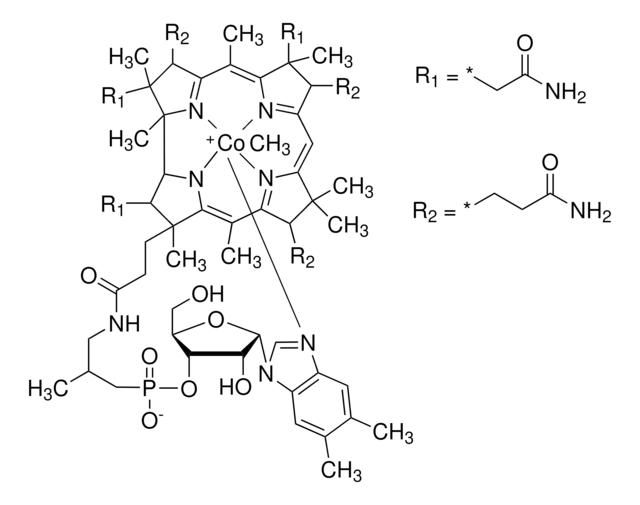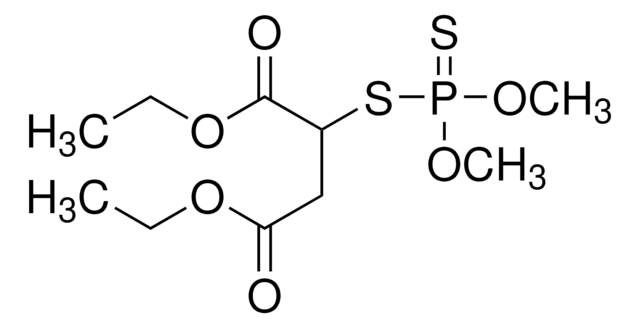95200
Vitamin B12a hydrochloride
≥96% (UV), ≥96% (HPLC)
Sinónimos:
Hydroxocobalamin hydrochloride
About This Item
Productos recomendados
biological source
fermentation/recombinant
Quality Level
assay
≥96% (HPLC)
≥96% (UV)
form
powder or crystals
loss
≤12% loss on drying, 20 °C (HV)
color
red to dark red
solubility
methanol: 10 mg/mL at 20 °C, clear, dark red
storage temp.
2-8°C
SMILES string
Cl.C[C@H](CNC(=O)CC[C@]1(C)[C@@H](CC(N)=O)[C@H]2N([Co+]O)C1=C(C)C3=NC(=CC4=NC(=C(C)C5=N[C@]2(C)[C@@](C)(CC(N)=O)[C@@H]5CCC(N)=O)[C@@](C)(CC(N)=O)[C@@H]4CCC(N)=O)C(C)(C)[C@@H]3CCC(N)=O)OP([O-])(=O)O[C@H]6[C@@H](O)[C@H](O[C@@H]6CO)n7cnc8cc(C)c(C)cc78
InChI
1S/C62H90N13O14P.ClH.Co.H2O/c1-29-20-39-40(21-30(29)2)75(28-70-39)57-52(84)53(41(27-76)87-57)89-90(85,86)88-31(3)26-69-49(83)18-19-59(8)37(22-46(66)80)56-62(11)61(10,25-48(68)82)36(14-17-45(65)79)51(74-62)33(5)55-60(9,24-47(67)81)34(12-15-43(63)77)38(71-55)23-42-58(6,7)35(13-16-44(64)78)50(72-42)32(4)54(59)73-56;;;/h20-21,23,28,31,34-37,41,52-53,56-57,76,84H,12-19,22,24-27H2,1-11H3,(H15,63,64,65,66,67,68,69,71,72,73,74,77,78,79,80,81,82,83,85,86);1H;;1H2/q;;+3;/p-3/t31-,34-,35-,36-,37+,41-,52-,53-,56-,57+,59-,60+,61+,62+;;;/m1.../s1
InChI key
KEHNCSYXYMMUCO-BXSGNKEGSA-K
¿Está buscando productos similares? Visita Guía de comparación de productos
Categorías relacionadas
Application
Biochem/physiol Actions
Other Notes
Storage Class
11 - Combustible Solids
wgk_germany
WGK 3
flash_point_f
Not applicable
flash_point_c
Not applicable
ppe
Eyeshields, Gloves, type N95 (US)
Elija entre una de las versiones más recientes:
¿Ya tiene este producto?
Encuentre la documentación para los productos que ha comprado recientemente en la Biblioteca de documentos.
Los clientes también vieron
Nuestro equipo de científicos tiene experiencia en todas las áreas de investigación: Ciencias de la vida, Ciencia de los materiales, Síntesis química, Cromatografía, Analítica y muchas otras.
Póngase en contacto con el Servicio técnico






